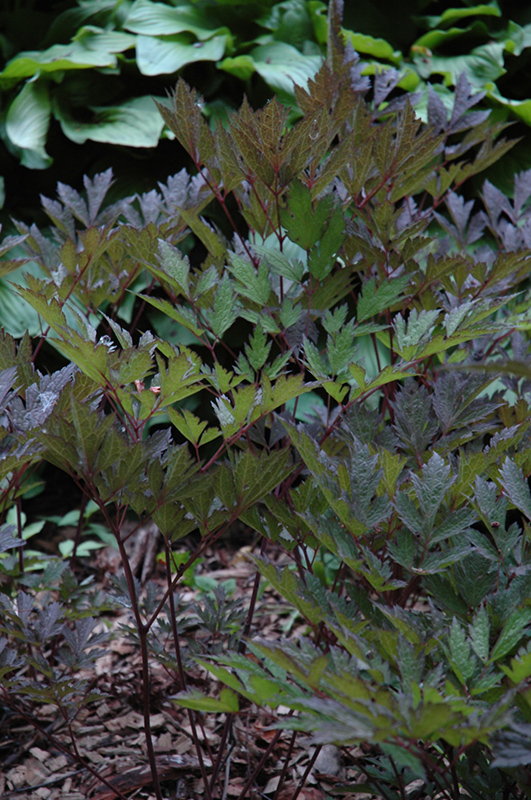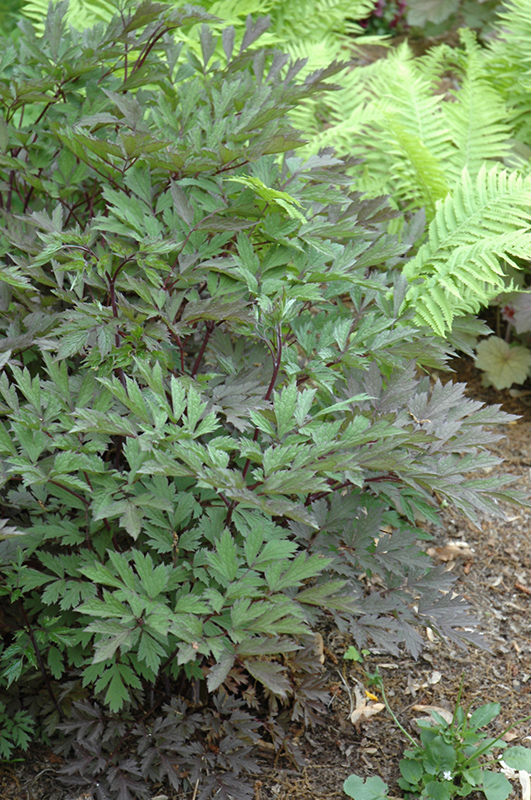VANDERMEER
PLANT LIBRARY
Find the perfect plant for your space by browsing through this extensive selection that we typically carry every year.
This library is for information purposes only.
James Compton Black Snakeroot
Actaea racemosa 'James Compton'
Plant Height: 24 inches
Flower Height: 3 feet
Spread: 24 inches
Sunlight:
![]()
![]()
Hardiness Zone: 4a
Other Names: Black Snakeroot, Black Cohosh, Cimicifuga racemosa
Description:
Beautiful leaves are deep dark green tinged with purple; bold spikes of very fragrant white flowers add interesting texture and an architectural element to the landscape
Ornamental Features
James Compton Black Snakeroot features bold spikes of fragrant white flowers rising above the foliage from late summer to early fall. The flowers are excellent for cutting. Its attractive serrated compound leaves emerge burgundy in spring, turning dark green in colour with prominent deep purple tips and tinges of coppery-bronze throughout the season. The brown fruits are carried on spikes from late summer to late winter. The dark red stems can be quite attractive.
Landscape Attributes
James Compton Black Snakeroot is an herbaceous perennial with tall flower stalks held atop a low mound of foliage. Its relatively coarse texture can be used to stand it apart from other garden plants with finer foliage.
This is a relatively low maintenance plant, and should be cut back in late fall in preparation for winter. It is a good choice for attracting birds and bees to your yard. It has no significant negative characteristics.
James Compton Black Snakeroot is recommended for the following landscape applications;
- Mass Planting
- General Garden Use
- Naturalizing And Woodland Gardens
Planting & Growing
James Compton Black Snakeroot will grow to be about 24 inches tall at maturity extending to 3 feet tall with the flowers, with a spread of 24 inches. It tends to be leggy, with a typical clearance of 1 foot from the ground, and should be underplanted with lower-growing perennials. It grows at a slow rate, and under ideal conditions can be expected to live for approximately 15 years. As an herbaceous perennial, this plant will usually die back to the crown each winter, and will regrow from the base each spring. Be careful not to disturb the crown in late winter when it may not be readily seen!
This plant does best in partial shade to shade. It prefers to grow in moist to wet soil, and will even tolerate some standing water. It is not particular as to soil type or pH. It is somewhat tolerant of urban pollution. This is a selection of a native North American species, and parts of it are known to be toxic to humans and animals, so care should be exercised in planting it around children and pets. It can be propagated by division; however, as a cultivated variety, be aware that it may be subject to certain restrictions or prohibitions on propagation.






